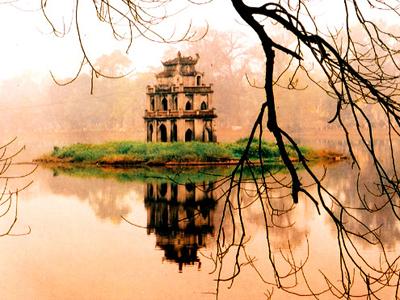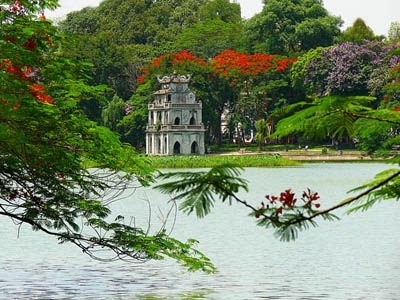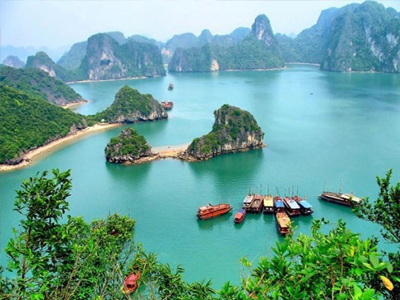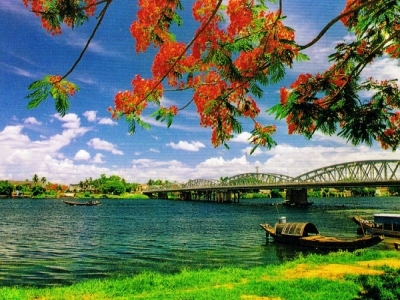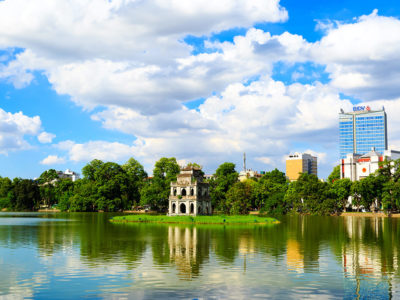Cambodia Travel Tips: 5 (More) Things to See and Do in Siem Reap
Tonle Sap Lake
The real heart of Siem Reap’s (and Cambodia’s) agriculture is the Tonle Sap Lake – the largest lake in all of Southeast Asia that can encompass nearly 10% of Cambodia’s landmass during rainy season! Needless to say, Tonle Sap is a cultural experience in and of itself, since it’s given rise to communities that live with the rhythms of the Tonle Sap. Fed by the mighty Mekong, Tonle Sap’s water level and water flow is dictated by the yearly flood pulses. That means that homes here are stilted to deal with the ever-changing water level, and local families often live metres above the water level in homes precariously balanced upon bamboo or wood stilts!
If an adventure into Cambodia further afield is in the cards, a full day exploring Tonle Sap Lake by boat is one of the best ways to see Siem Reap’s less ancient (but just as fascinating) elements. If you’re really looking to experience the Lake at its most vibrant, head to Siem Reap during the city’s yearly Bon Om Touk Festival (usually in November) that takes place just as the lake’s tide shifts and the waters change direction!
Kulen Mountain
It wouldn’t be a stretch to say that nearly every inch of ancient Angkor is a holy ground, but Kulen Mountain is most often considered the city’s (and the country’s) most holy place. Buddhists and Hindus in the country regularly travel to the summit of the hill on pilgrimage, thanks to its particularly spiritual history. But beyond just religious significance, Phnom Kulen is also a significant place of the Khmer people, since this is where most locals would claim was the birthplace of the mighty Khmer Empire!
No matter which story you follow, Kulen Mountain is well-worth the pilgrimage from Siem Reap. Make sure to bring along some good walking shoes, since the best sights to see at Kulen Mountain are the two magnificent waterfalls near its base. Between bouts of exploring the falls, there are even some temple ruins and spiritual relics here – Preah Ang Thom even houses an enormous Buddha statue.
Artisan’s d’Angkor
It’d be a bit of a waste to leave Siem Reap without spending some serious energy exploring the city’s incredible collection of souvenirs and handmade handicrafts. While a wander through the night market is a bit of a hit-and-miss experience, the best places to find souvenirs that are both high quality and sustainably produced is by heading to the school that helps keep Khmer art alive – Artisans d’Angkor. Established in the mid-90s, Artisans d’Angkor played an integral part in keeping Khmer traditional handicrafts alive following the Khmer Rouge, which nearly wiped out Cambodia’s beautiful cultural arts, like wood carving, lacquer and silk weaving.
At Artisans, you’ll have the rare opportunity to see how these handicrafts are made from scratch, since a guided walk through the area’s small “workshops” is the first thing you’ll do after hopping off of your tuk tuk. After getting close enough to see just how delicate and intricate the processes behind some of Cambodia’s most beautiful handicrafts really are, you’ll find yourself in a showroom to buy your favourite souvenirs to take home. The best part? All of the proceeds made from purchases goes back toward funding the training and support of local artisans who created them.
Training Restaurants
Among all of the things that Siem Reap is famous for, social enterprise and social change is perhaps the most inspiring. After the impact of the Khmer Rouge, Cambodia struggled to get back on its feet both economically and socially, and the same went for the home of the Angkor temples. Thankfully, tourism has breathed new life into an economy that holds the potential to provide better jobs and sustainable livelihoods for locals, and most of it is done through restaurants that double as training grounds for hospitality workers in the making.
At training restaurants like Marum and Haven, nearly all of the staff are either students or graduates-cum-teachers as servers, kitchen staff and management. Your dollars go toward building a brighter future for the city and the country by providing consistent work for young Khmer and families who otherwise would struggle to survive. Plus, training restaurants aim to create more sustainable economic systems in the country, so that the communities here can begin to create stronger job opportunities and systems. These same initiatives are part of what drives the Phare Circus and boutiques like Daughters of Cambodia – only with delicious food rather than entertainment and shopping!
Chansor Village
It’s seems hard to get a real taste of what rural Cambodia is really like in tourist-centric cities like Siem Reap, but authentic countryside isn’t that far away. Getting there, though, is a bit more difficult – and finding a way to visit these kinds of places safely and respectfully is quite the challenge. Thankfully, there are a few villages not far out of Siem Reap where a day-in-the-life trip could mean the difference between a standard Siem Reap Temples experience and a truly extraordinary cultural experience.
At nearby community villages like Chansor Village, visitors have a chance to see what rural Khmer lifestyles are like (up close!) while supporting those communities in the process. Don’t show up not expecting to get your hands dirty, though – these villages are all about rolling up your sleeves and taking part in what locals here do on a daily basis to survive. That includes planting, cooking, farming, feeding livestock and cleaning – just to name a few. Don’t worry though! At the end of all of it, you’ll be rewarded with a home-cooked meal with a local family that’s well worth the elbow grease!
Other Article:
- Laos Travel Tips:Top 10 Must-See Destinations in Laos
- Cambodia Travel Tips: Top 10 Attractions in Cambodia
- Vietnam Travel Tips: 5 Reasons You Should Visit Cu Chi Tunnels
- Laos Travel Tips: Visit Laos' 8 Most Unique Wats & Pagodas
- Laos Travel Tips: A Day in the Life of a Novice Monk in Laos
- Vietnam Travel Tips: Expert Travel Guide for Northern Vietnam
- Vietnam Travel Tips: Life Along the Mekong - The Cham Village
- Vietnam Travel Tips: A Beginner's Guide to Vietnam's National Day
- Laos Travel Tips: 7 Things to Do in Vientiane
- Laos Travel Tips: 5 Best Restaurants in Luang Prabang
- Cambodia Travel Tips: Top 10 Temples In Cambodia
- Cambodia Travel Tips: Making the Most of the Angkor Temples
- Vietnam Travel Tips: What You Need To Know

